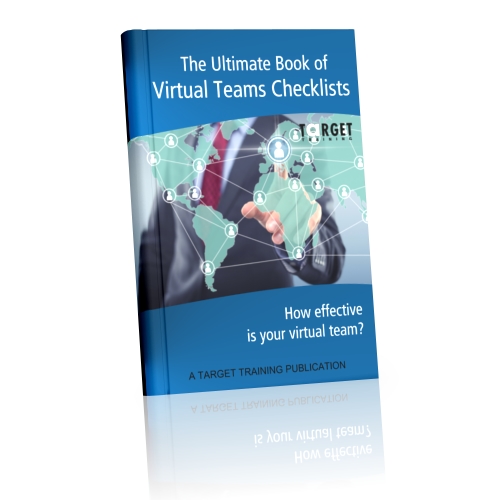What makes a great business English learner?
Ninety percent of the time, when a participant tells me “I am just not good with languages,” it turns out to be false. Much more common is that the person’s previous experience with poor learning materials and inadequate methods led them to have two limiting beliefs: that they were not cut out for learning a language, and that language learning is a difficult, boring process. The following success story of InCorporate training participant Karl from Germany shows what is possible even for a busy manager in his 50’s with an active private life. Find out what attitudes and behaviors drove Karl’s rapid progress, how he enjoyed doing it, and how you can improve your own journey by learning from Karl’s success.
As business English specialists, we often talk about what makes great training. From focusing on and developing the skills and qualities that make fantastic trainers, to highlighting the importance of the behaviors and characteristics required by clients to maximize the impact of training on their organizations, we’ve learned that every stakeholder holds unique responsibilities in ensuring great results.
Of course, great trainers, innovative, pragmatic training concepts, and supportive clients are all essential to excellent training programs. Equally important however—if not even more important— are the behaviors, qualities, and attitudes of the participants themselves. The most qualified and skilled trainers, the highest-quality training materials, and an unlimited training budget cannot go very far without motivated, ambitious, and proactive participants.
So, what does it take to be the kind of participant who gets the most out of training? Most people seem to believe that there are only two options: you are either naturally good with languages, or you must spend every minute of your spare time doing boring grammar exercises and memorizing lists of new vocabulary words. Well, I’m here to tell you, from years of experience as a trainer and from my formal studies of how languages are learned, that this is simply not true, and that improving can and should be enjoyable.
Meet Karl
Occasionally as an InCorporate Trainer, I meet a participant who exemplifies the qualities and behaviors of an excellent learner, and that’s exactly what happened when I met Karl. Karl, a group leader in an accounting department of a large German company, has attended weekly one-to-one sessions with me for the last year. When he first told me about his incredible results—that he had gone from A1 (beginner) to C1 (proficient) English in just a couple of years—I almost couldn’t believe my ears. After just a few sessions with him, though, it became very clear to me why he had made such remarkable progress. I can summarize the four key characteristics that led to Karl’s success as proactivity, curiosity, consistency, and reflectiveness.
Let’s explore each one in a bit more detail.
Proactivity
When Karl made the decision to improve his English to increase his personal enjoyment and professional success, he took matters into his own hands. He didn’t overthink it. Instead, he started doing whatever he could do get a basic grasp of the language. As soon as he had a basic understanding, he spent as much time as he could immersing himself in the language. Specifically, he began listening to podcasts and news in English on his commute to work and found that his understanding kept getting better and better. He also found that this was a great way to make use of the time, as he had to be in the car anyway.
When he realized that he could understand more than he could speak, he hired some ‘tutors’ online—basically just people to practice conversing with. He found that this dramatically improved his confidence using the language, and it was incredibly interesting to chat with people from all over the world.
Finally, as soon as he realized that an InCorporate Trainer was available to him for private training, he jumped at the opportunity, and began integrating his foundational language skills with his professional life. Then, things really took off.
Curiosity
This one might come as a surprise to hard-working, results-driven people. Why does curiosity matter and how did it help Karl achieve such great results? There are at least two reasons.
Firstly, curiosity—wanting to know and learn more—is a highly motivating trait. Karl soon realized that improving his English connected him with the world and helped him to answer questions that he had. As his understanding improved, he began to forget that he was even listening, reading, and talking in English because he was so focused on the content of what he was listening to, reading, and talking about. We know from research into how people learn languages that this is hugely important: we learn language by understanding and really focusing on the message of what we are listening to. Karl’s curiosity about the world, current events, and the forces impacting his career and company became a highly motivating force for his journey.
Secondly, Karl had an attitude of curiosity about the language itself. Every week, he came to his training session with questions and comments about something he had encountered in English at work. An idiom, a pun, a slogan, an abbreviation—Karl noticed that there is always something to be learned, discussed, and explored. He also brought in presentations, documents, and emails from his working life. This openness means that he is always paying attention to the little details, and attention drives learning. (In contrast, I sometimes ask participants about what the English around them means or if they have ever explored it or thought about it. “GPD? I have no idea…it’s just what we call the talk with our boss each year.” Karl wouldn’t let the abbreviation GPD pass by him without dissecting it, analyzing it, and learning something from it).
Consistency
This one is easy to understand but particularly important in practice. Not only was he consistent with his self-directed learning, but he also prioritized attending his training sessions very regularly, ensuring near-weekly practice. This gave us plenty of time to review previous material and integrate current work issues and world events into our ongoing conversation.
Under consistency, I would also file Karl’s focus on ‘little wins.’ Instead of needing to be perfect right away, he learned to enjoy the small successes, from delivering a successful presentation at work, to navigating a difficult situation while traveling in the US. He focused on what he could do thanks to training and learning as opposed to what he couldn’t do yet.
Reflectiveness
We’ve already seen how Karl reflects on the English around him as an active and curious learner. But importantly, he also reflects on the learning process itself. Not only did he come to training with specific language related questions, but he also came with questions and reflections about the process of learning a language and the strategies he used to improve.
It was interesting to hear how many of his experiences matched what I know about learning from a scholarly perspective. For example, Karl would often say things like “I don’t really know any rules, I just have an intuitive feel for what I’m saying.” Karl’s experience matches research in the field of Second Language Acquisition (SLA) —knowing about language (knowing ‘rules’) is a very different thing than knowing language (being able to use language naturally). In fact, with such a good intuitive understanding, developed through many hours of listening, reading, and conversing in English, when Karl did need to polish up his English with a rule, he was able to grasp it very quickly and easily. In contrast, people who focus too much on the rules of language, without enough exposure to input and practice using language, often struggle for many years to improve their skills. Karl’s experience highlights the importance of learning by doing when it comes to language learning.
Learning from Karl
While having a great trainer, quality training materials, and a supportive client are essential for effective language training, the behaviors, qualities, and attitudes of participants themselves are equally important. Participants like Karl, who are proactive, curious, consistent, and reflective, are the ones who achieve remarkable progress in their language learning journey. Here are some practical takeaways from Karl’s success story:
- Be proactive: There has never been a better time to be a language learner. Find ways to include more English in your daily routine. Listen and read about things that interest you and take opportunities to practice speaking and writing. Take your learning into your own hands. If you are lucky enough to have an InCorporate Trainer, use them! Your trainer is there to support you with on-the-job training.
- Be curious: Use your natural interests to drive your learning and develop an attitude of curiosity towards the language itself. Here’s an easy way to start: Go to YouTube. Search for a hobby, an interest of yours, or a professional topic or skill you want to know more about, in English. Find content that truly interests and engages you and get lost in it.
- Be consistent: Practicing a little but often beats a lot of practice once in a while. Karl listened to podcasts on his commute to and from work, had two conversations per week with his tutors, and showed up every week to his private training session. Think of ways you can take a little-by-little approach. If you have InCorporate Training, attend training as often as you can. Also, focus on the small successes. Can you do or say something in English this month that you couldn’t last month? Congratulations. That’s real progress.
- Be reflective: If you work for an international company like Karl, chances are, English is all around you. Engage with it daily. InCorporate Trainers are thrilled when participants bring in documents, emails, questions, and ideas to explore in training. You don’t need a coursebook when you are surrounded by a real-world coursebook and have a professional trainer to guide you.
Mastering a language is a lengthy process, but you’d be surprised at how quickly things get moving when you get the basic behaviors and mindset in place. Importantly, you have to find ways to enjoy the journey itself, just like Karl.


















